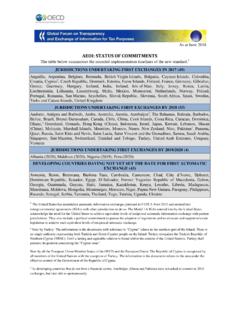Transcription of How to Train For and Run Your First 100 at the Umstead 100
1 How to Train For and Run your First 100 at the Umstead 100 By: Blake Norwood, RD If you have gotten this far, you are poised to begin the journey towards achieving membership in the Brotherhood and Sisterhood of Hundred Milers. It is an elite society for which there is but one criterion for membership - finishing a 100 mile race. There are many excellent 100 mile events in the United States of which one of them is the Umstead 100 Mile Endurance Run. The Umstead 100 is held annually, usually the First week in April. By its nature, the Umstead 100 attracts many runners attempting to finish their First 100 mile race. One of the goals of the Umstead is to help new ultra runners to bridge the quantum leap from 50 mile runs to the mountainous and more rigorous demands of most 100 mile endurance runs.
2 It will allow those runners who have difficulty finishing 100 miles in 24 hours or just finishing 100 miles the opportunity to do so when severe topography, heat, and getting lost are removed as major obstacles. Long is the way, and hard, that leads to being a Hundred Miler. Examine your Goals: First , you should examine deep inside of yourself to decide if you have the determination and perseverance necessary to Train for and then run a 100 mile race. This is not an undertaking for the faint hearted or those who are not willing to endure pain, suffering and many lonely miles of training. There is no dishonor in simply being a marathoner; less than one percent of all Americans have attained that achievement. Second, do you have the time to commit to the effort?
3 Take the time you devoted to training for a marathon and easily double it. Think of your family, will they support you in this time and energy consuming undertaking? On the plus side, ultra running tends to be a big family undertaking. Many families combine ultra events with family vacations. Third, take on the challenge only for the personal satisfaction you will realize by success, for 99% of ultra runners that is all there is at the attainment of the goal. If you are still with me, you are ready to begin a journey that will culminate in your achieving what will be one of the most satisfying moments you will experience in life. It is an honor that no one can give you. It is an achievement that must be attained the old fashion way; you alone must earn it.
4 Never be afraid to try something new remember amateurs built the Ark and professionals built the Titanic. Marathons versus Ultra Running: As you begin your training, it will be assumed that you have completed at least a marathon and your current training would allow you to compete successfully in a marathon. It is further assumed that you are training for or have previously completed a 50 mile event. It is strongly suggested that you stair step your way to competition in a 100 mile event. Most ultra runners move up from being successful marathoners to 50 K and 50 M events prior to participation in a 100 mile event. Ultra running requires runners to learn and hone a different set of skills and knowledge not required in your basic marathon.
5 Not only do you have to Train your body physically to run longer distances, you also have to learn about fatigue and pain management over a much longer period of time. Eating and drinking in ultra running are substantially different from a simple marathon and are integral to your success. We lose more novice ultra-marathoners due to inability to eat and drink correctly during the race than we do for simple leg/body fatigue. In a marathon, many, if not most, runners complete the race with fluids alone and very little or no solid food. If you try that in a 100 miler, you will be on the sideline by 50 miles or likely much earlier. It is strongly urged that you hone your ultra running skills by stair stepping up. You will gain both experience and confidence by completing a 50 miler prior to undertaking your First 100 miler.
6 There is never a crowd on the extra mile. Training: There is no one training plan that is right for all runners. The training plan discussed here is a basic plan that may be tailored for use by each individual. That said, many if not most of the training strategies provided here are utilized by a significant portion of ultra runners, especially those First time 100 mile runners. This training plan is not meant for the front of the pack runners, rather, it is meant for the mid and back of the pack runners. The plan discussed here will be for 100 mile training but can easily be adjusted for First time 50 mile training. The primary difference will be in the length and number of the long runs. The plan and tips contained here have been used by me to Train and complete numerous 100 mile races.
7 For your First 100 mile attempt, I suggest at least a six month preparatory training program. First , we will discuss where you need to be a month prior to the race itself. Weekly milage should as a minimum be in the 60 to 70 miles per week range. This is a minimum and for some folks will be in the 70 to 90 mile range. Let s deal with the minimum, 60 to 70 miles. Here is what a typical weekly schedule should look like not later than a month prior to the race. If you can attain this level two months prior to the race, that is so much the better. Each training day will be discussed individually in some detail. Monday - 5 to 10 mile daily run Tuesday Speed work 5 miles Wednesday 5 to 10 mile daily run Thursday Speed walking 5 to 6 miles Friday 5 mile daily run or rest day Saturday 35 to 40 mile long run Sunday Rest day spend it with your family The long run: The weekly long run is the most important factor in your training plan.
8 The last long run prior to the race should be in the 35 to 40 mile range. your goal should be to complete the long run and while tired, you should feel that you are strong and could easily continue running, especially after a short 10 minute rest. This is a training run and not a competition. If you are worn out on a 40 mile training run, you have trained too fast. The long run, for the vast portion of the run, should be in an aerobic state. Only on a few large hills should you get to an anaerobic state. If you find that you are in an extended anaerobic state, cut back on the pace. We are practicing to run far, not fast. Occasionally during the long run add in a quarter mile or half mile frolic increasing your speed noticeably. This will use other muscles and break the monotony of the long slow run.
9 Some runners prefer to combine the long run with an actual ultra event. Participating in a 50K or 50M event is fine as long as you remember you are in training and not competing. Whatever the event, you want to feel good at the completion of the race; I like to say used but not used up. I would not participate in any 50M race event within 30 days of the 100 mile race date. Much can be learned in an actual event from both the experience as well as other runners. You must fight the urge to compete; you are training! The exception to the non competition rule is if the event is more than 90 days prior to 100 mile race day. Long runs early in the training program may be in the 15 to 20 mile range working up to the final 35 to 40 mile range over a period of months.
10 The long run distance does not always have to increase each week. Some weeks you may choose to run shorter for a variety of reasons from time available to simple tiredness. A typical weekly long run schedule for a typical month might look like: Week 1 - 20 miles (or possibly less early in the training program) Week 2 - The long run distance from last month's week 4 Week 3 - Rest day, no long run this week Week 4 - Add 5 miles to this month's week 2 mileage. Such a schedule would allow you to work up from a 20 mile long run to a 40 mile long run over a period of 4 months. Night Runs: At least two of your long runs should be at night. They should start at such time as you will complete the training run in the 3 am to 6 am time period.







